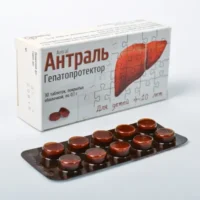Description
Ursofalk (Ursodeoxycholic Acid) Tablets 500 mg. №100
Ingredients
- Each tablet contains 500 mg of ursodeoxycholic acid.
Dosage
- The usual dose is 10-15 mg/kg body weight per day, taken in 2-4 divided doses.
Indications
- Ursofalk tablets are indicated for the treatment of primary biliary cholangitis, gallstones, and chronic liver diseases.
Contraindications
- Do not use Ursofalk tablets if you are allergic to ursodeoxycholic acid or any other ingredients in the formulation.
Directions
- Swallow the tablets whole with a glass of water. Do not crush or chew the tablets.
Scientific Evidence
- Ursodeoxycholic acid, the active ingredient in Ursofalk tablets, has hepatoprotective and choleretic properties. It helps dissolve cholesterol gallstones and improves liver function in various liver diseases.
- Studies in the Journal of Hepatology have shown the effectiveness of ursodeoxycholic acid in treating primary biliary cholangitis by reducing liver enzymes and improving liver histology.
Additional Information
- Follow the prescribed dosage and treatment duration with Ursofalk tablets as directed by your healthcare provider.
- Inform your doctor about any other medications you are taking to avoid potential drug interactions.
- Discuss the benefits and risks of using Ursofalk tablets with your healthcare provider, especially if you have a history of liver or gallbladder problems.





